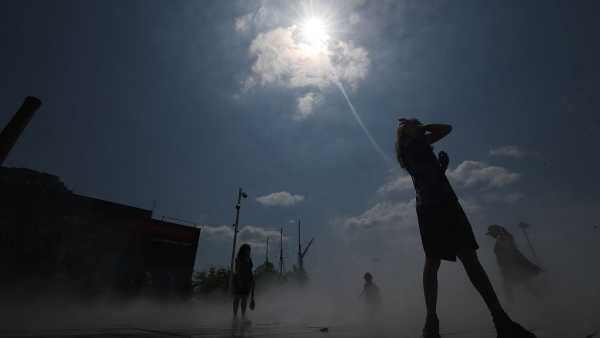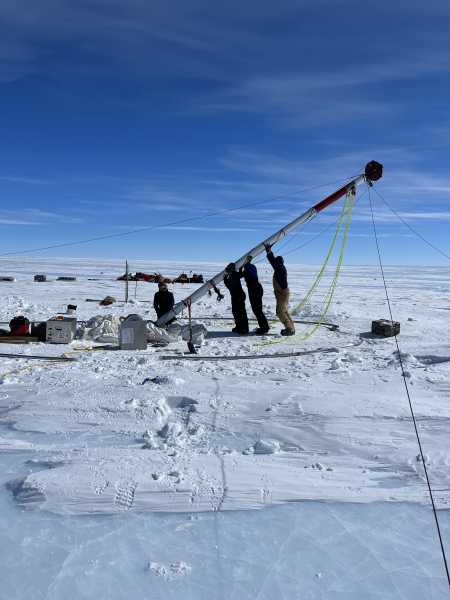
Satellite images from left to right show the size of the Aral Sea in 2000, 2007, and 2014. The drying up of the Aral Sea is a result of human activity and drought. (Image credit: NASA Earth Observatory)
The level of the dried-up Aral Sea in Central Asia is steadily rising as the Earth's mantle beneath it rises, new research suggests.
The rise is the result of an environmental disaster known as the “silent Chernobyl” that hit the region in the 1960s when rivers flowing into the Aral Sea were diverted for irrigation, scientists say. The Aral Sea, once the world’s fourth-largest lake, later suffered a severe drought that caused it to split in two in 1986.
Over the past 80 years, the Aral Sea has lost 1.1 billion tons (1 billion metric tons) of water, according to a new study published April 7 in the journal Nature Geoscience. That loss, equivalent to the mass of 150 Great Pyramids of Giza, was so significant that it caused the Earth’s crust to initially rise, “like a coiled spring that was released,” Simon Lamb, an associate professor of earth sciences at Victoria University of Wellington, New Zealand, wrote in a paper published in Nature Geoscience alongside the study.
“Because the weight of the lake’s water would push down on the rock underneath, it was thought that the rock would rise a small amount until the weight was removed,” added Lamb, who was not involved in the study. But the new study shows that the land continues to rise for decades after the water evaporates. What’s more, there’s a measurable bulge that extends well beyond the original shoreline of the Aral Sea.
Scientists discovered the bulge using a satellite remote sensing technique known as interferometric synthetic aperture radar, or InSAR, which detects subtle changes in the Earth’s surface, including deformations caused by a bulge or depression. The arid environment around the Aral Sea, which straddles the border of Uzbekistan and Kazakhstan, makes it easier to detect the smallest movements of the ground, the researchers report in their study.
InSAR data collected between 2016 and 2020 show that the land is rising over a distance of 310 miles (500 kilometers) around the center of the Aral Sea. When comparing the size of the bulge from year to year, the researchers noted that it increased in height by about 0.3 inches (7 millimeters) during that period.
Scientists believe the rise is likely due to the reaction of the Earth's mantle to the evaporation of the Aral Sea.
The mantle is made of viscous rock that can “flow,” replacing material displaced by the weight of rocks and water on the Earth's surface. For example, mantle rock is currently moving toward Scandinavia, replacing material pushed away by the weight of huge ice sheets during the last ice age, Lamb writes.
Sourse: www.livescience.com





